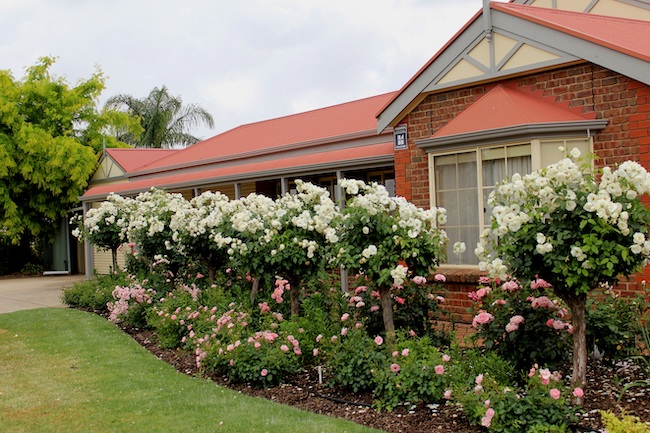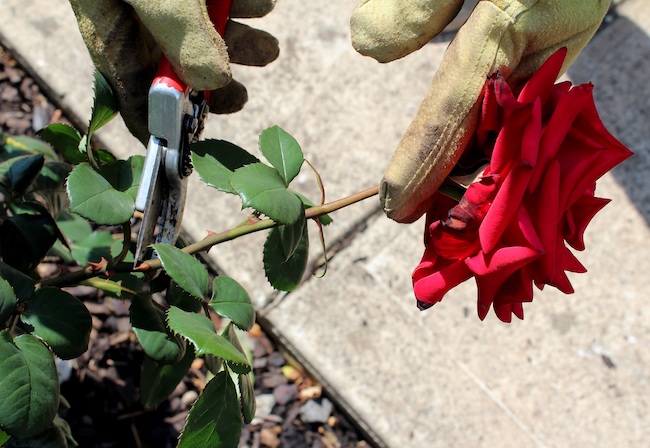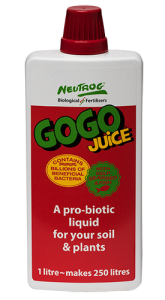ESSENTIALS FOR ROSE GROWING SUCCESS
SUMMER ROSE GROWING CULTURE NOTES FOR SOUTH AUSTRALIA
Rose Society of S.A.
Roses will thrive in our hot dry summers providing we follow a few basic guidelines.
Summer in South Australia is generally hot, dry and sunny with very low humidity. The average daily temperatures in Adelaide in December are 26°C, in January 29°C and February 29°C. These averages are lower in the Adelaide Hills, Lower South East, Lower Eyre and Yorke Peninsulas and Kangaroo Island and similar or higher elsewhere in the State.
Of course, what these averages don’t show are the very hot days and heatwaves we have during these months which can be very severe and savage our garden plants.
Rainfall, on average is also generally low in these months being 28mm in December, 19mm in January and 13mm in February. The amount of sunshine is very high, averaging around 300 hours per month. The UV readings are often high to extreme and evaporation rates, due to heat and low humidity, are very high.
So, what does this mean for our roses and how can we care for them during summer?
- Watering
The most important ingredient for roses in summer is water. Generally, established roses need an average of 20 to 30 litres of water for each rose per week. It is essential that a rose is well hydrated prior to expected heatwaves, where the temperature is above 35°C on average. If severe heat is forecasted in the week ahead, you should increase the rate of watering to 30 to 40 litres per plant. If a rose dries out, it is difficult to get it to recover quickly. It is recommended to apply the water in one weekly application or, at most, twice per week preferably early in the morning. Deep watering weekly is far better than small amounts daily.
These watering recommendations assume you have a substantial covering of mulch. Without mulch, you will need twice the volume of water per plant.
Finally, for those with roses in pots, a good watering (until it flows from the bottom of the container) will be required every two days. Try and shift or place your pots under partial shade during heatwaves.
- Mulch
Mulch is the gardener’s “best friend” in the summer months. A good layer of mulch performs three key tasks:
- Significantly reducing evaporation from the soil, saving up to 40% to 50% of the irrigation otherwise required.
- Cooling and maintaining moisture levels around surface roots (those in the top 10cm of the soil).
- Feeding the plant and enriching the good microbial activity in the soil.
‘Whoflungdung’ is a certified organic mulch from Neutrog which has revolutionised mulch and its application throughout Australia. This mulch is biologically activated, nutrient rich and weed free. It comes in convenient 20kg compressed bales and can be taken to and easily spread where it’s needed.
On rose garden beds ‘Whoflungdung’ should be applied between 5cm (if topping up areas already mulched) to 10cm thick (if applying for the first time). It can be applied after pruning when it is easier to work around roses or in spring/early summer. Keep at least 10cm radius from the base of the rose. Apply water after application to settle the mulch in and reduce the initial odour which only lasts a couple of days.

Neutrog Whoflungdung Mulch applied
- Flowering
Providing the spent blooms were removed following the first flush in spring, another bountiful blooming period will coincide with the Christmas/New Year period.
Once this is over, we have two options. The first is to leave the spent blooms on the bush and reduce the watering a little, providing just enough to keep the plants alive, but not thriving – effectively placing them into a summer hibernation. They can then be stirred back into strong growth with an application of Neutrog ‘Sudden Impact for Roses’ and a summer trim in late February or early March.
![]()
‘Sudden Impact for Roses’ is an organic based fertiliser recommended by the Rose Society of S.A. It provides a full range of plant nutrients in a slow release form together with water-soluble nutrients to maximise performance.
The second option is to keep the rose flowering with continuous removal of spent blooms, with plenty of water and applications of liquid ‘Sudden Impact for Roses’ every two weeks in January.
It is to be expected that the flowers in January, February and early March will generally be smaller with less petals than are produced in the spring and late autumn flushes. This is heat related. In addition, due to high UV readings, dark coloured roses, such as red roses, can show scorched petals after very hot, sunny days. Like us, some roses can burn under these conditions. Temporary shade can prevent this occurring if desired.

Dead-head to the second five-leaflet
- Fertilising
If you want your roses to thrive during summer, an application of ‘Sudden Impact for Roses’ soon after Christmas is recommended. This can be applied as pellets if you have a sprinkling system or as a liquid if you have drippers.
Any underperforming roses can be given an application of Neutrog’s ‘GOGO Juice’ every fortnight. This is essentially a pro-biotic for your soil and plants which is rich in beneficial bacteria and other microbes to assist in encouraging the plant to recover. If it does not recover, it may be near the end of its natural life and could be dug out in autumn to enable a new rose to be planted.

If you have put your roses into summer hibernation, start applications of heavy watering early in February and then fertilise with ‘Sudden Impact for Roses’ in mid to late February. A summer trim should follow two weeks later to ensure the rose is set up for an abundant autumn flush in around 55 days after the trim.
A word of warning is required here because the operative procedure is summer trimming. It is sometimes wrongly referred to as summer pruning and the inexperienced grower must resist the temptation to cut too heavily.
- Pests and Diseases
Given our hot, dry, low-humidity summers, most fungal issues disappear and pests such as Aphis and grubs also “back off”.
Spider Mite may be an issue and when present, lower leaves close to the ground may pale in colour. Remove a leaf, turn it over and watch carefully (a magnifying glass may help). If insects, the size of pepper start moving around and/or a fine web is evident, Spider Mite are present.
Organic oils (such as Eco-Oil or Eco-Neem) or one of the natural sprays (such as Natrasoap) can be used to control bad infestations – don’t use strong, toxic insecticides.
Water sprayed upward from under the leaves can also assist with the removal of early infections. Spider Mite live under leaves and don’t like to be wet.
Summer is all about the weather. Plan ahead based on the weather forecast for the next 7 days in relation to watering and possibly using shade protection.
If you follow these guidelines you will continue to get the best from your roses.

